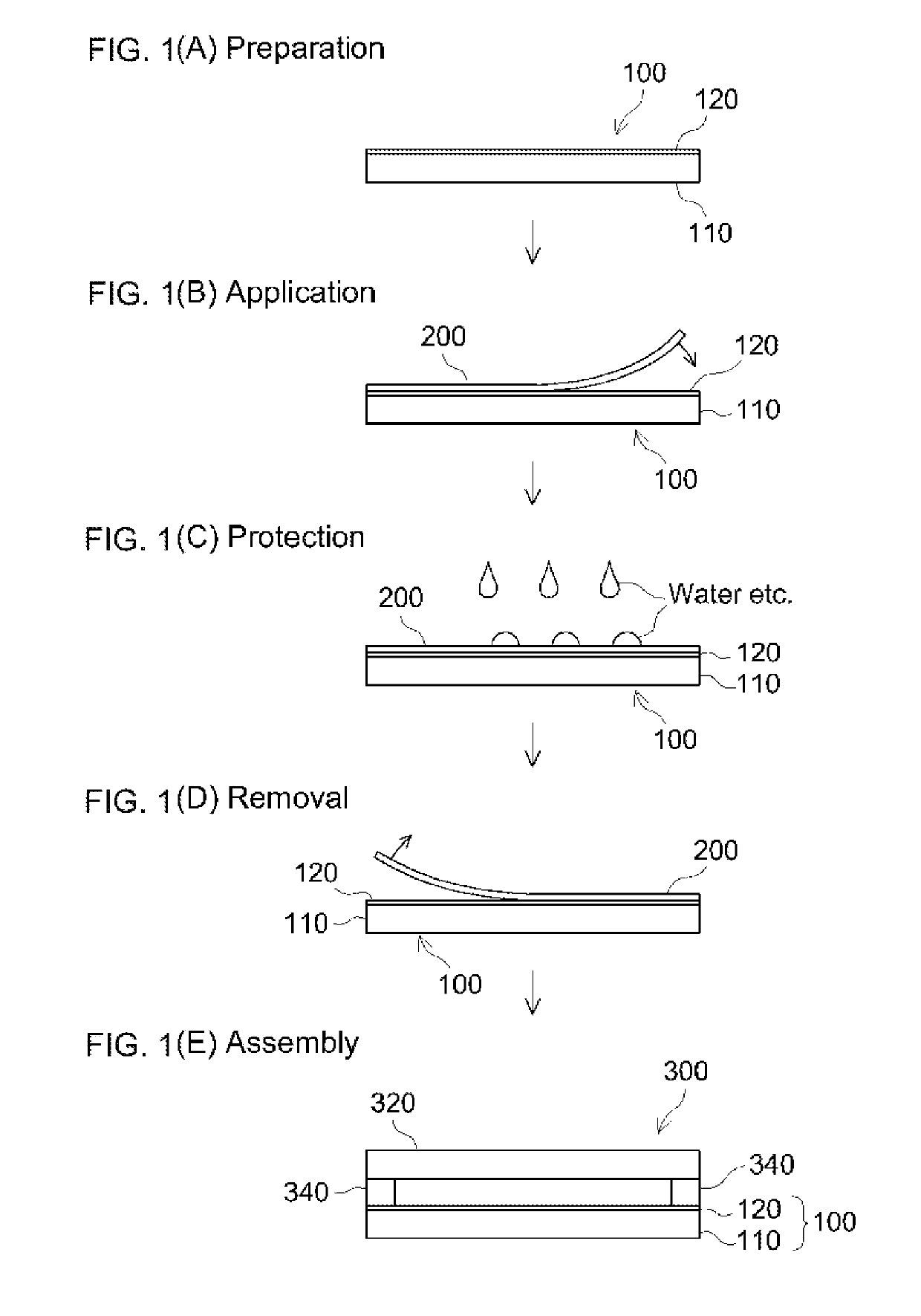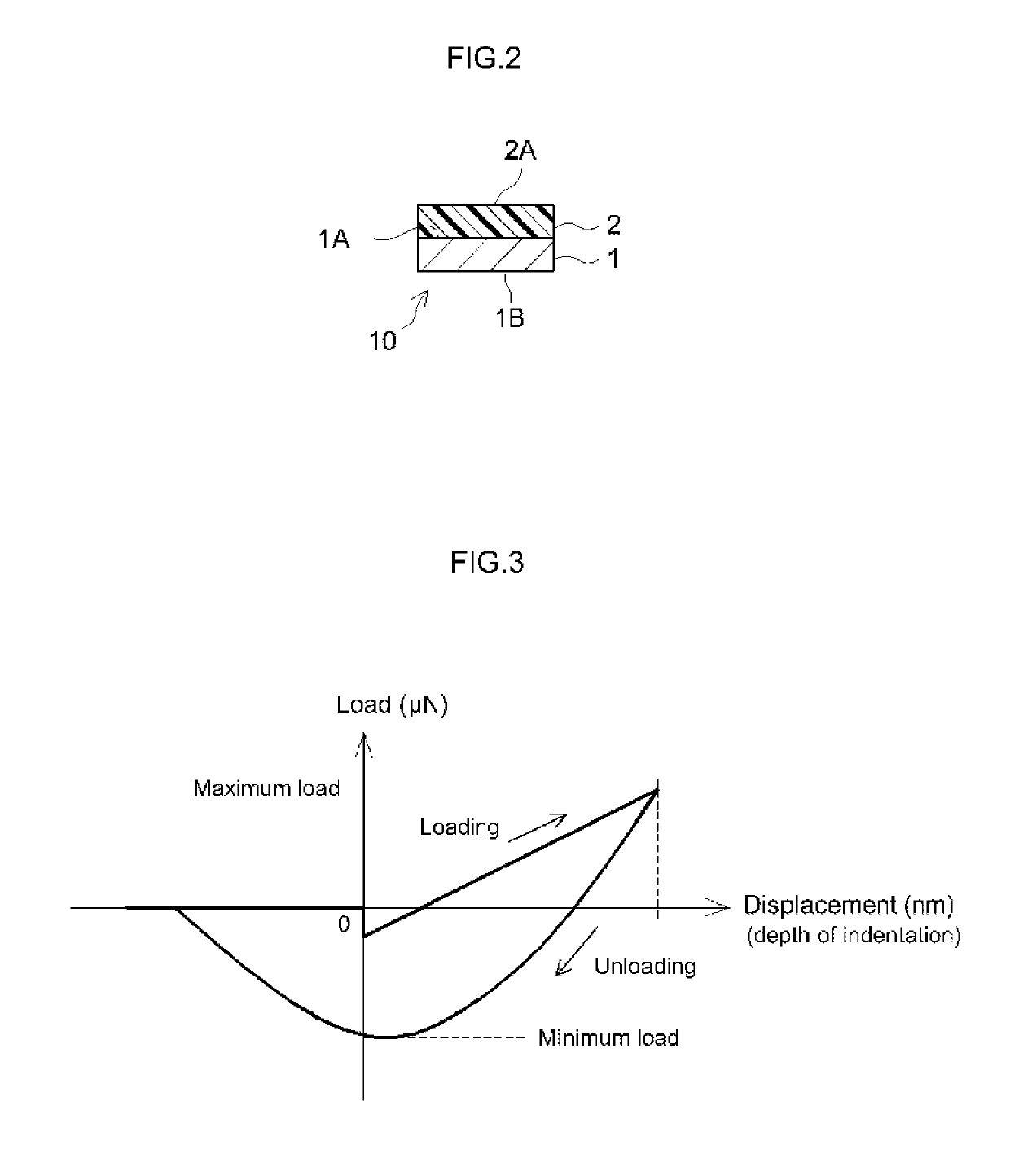Method for producing glass unit and pressure-sensitive adhesive sheet
- Summary
- Abstract
- Description
- Claims
- Application Information
AI Technical Summary
Benefits of technology
Problems solved by technology
Method used
Image
Examples
example 1
[0179]Into a reaction vessel equipped with a stirrer, a thermometer, a nitrogen inlet, a condenser and an addition funnel, were placed 45 parts of 2-ethylhexyl acrylate (2EHA), 51 parts of n-butyl methacrylate (BMA) and 4 parts of 2-hydroxyethyl acrylate (HEA) as monomers as well as ethyle acetate as the polymerization solvent. The resulting mixture was allowed to stir under a nitrogen flow for two hours. Oxygen was thus eliminated from the polymerization system. Subsequently, was added 0.2 part of 2,2′-azobisisobutyronitrile and solution polymerization was carried out at 60° C. for 6 hours to obtain an acrylic polymer solution according to this Example.
[0180]To the acrylic polymer solution, for 100 parts of the acrylic polymer in the solution, was added 1.5 part of isocyanate-based crosslinking agent (product of Covestro, trade name DESMODUR RFE, tris(p-isocyanatophenyl)thiophosphate, 27% ethyl acetate solution) and mixed with stirring to prepare a PSA composition according to this...
example 2
[0182]The crosslinking agent was used in the amount shown in Table 1. Otherwise in the same manner as Example 1, a PSA composition according to this Example was prepared and a PSA sheet was fabricated.
example 3
[0183]Were mixed 92 parts of 2EHA, 4 parts of methyl methacrylate (MMA), 4 parts of acrylic acid (AA), 3 parts of emulsifier (based on non-volatiles), and 42 parts of ion-exchanged water. The resulting mixture was stirred with a homomixer to prepare an aqueous emulsion (monomer emulsion). As the emulsifier, was used a reactive anionic emulsifier (trade name AQUALON KH-1025, product of Dai-ichi Kogyo Seiyaku Co., Ltd.).
[0184]Into a reaction vessel equipped with a condenser, a nitrogen inlet, a thermometer and a stirrer, was placed 51.5 parts of ion-exchanged water; the resultant was stirred at room temperature for at least one hour while introducing nitrogen gas. Subsequently, the system was heated to 70° C.; 0.05 part of ammonium persulfate was added; and while stirring, the monomer emulsion was gradually added over three hours. After the completion of the addition of the monomer emulsion, the reaction mixture was continuously stirred at 75° C. for two hours and then cooled to 30° C...
PUM
| Property | Measurement | Unit |
|---|---|---|
| Thickness | aaaaa | aaaaa |
| Thickness | aaaaa | aaaaa |
| Pressure | aaaaa | aaaaa |
Abstract
Description
Claims
Application Information
 Login to View More
Login to View More - R&D
- Intellectual Property
- Life Sciences
- Materials
- Tech Scout
- Unparalleled Data Quality
- Higher Quality Content
- 60% Fewer Hallucinations
Browse by: Latest US Patents, China's latest patents, Technical Efficacy Thesaurus, Application Domain, Technology Topic, Popular Technical Reports.
© 2025 PatSnap. All rights reserved.Legal|Privacy policy|Modern Slavery Act Transparency Statement|Sitemap|About US| Contact US: help@patsnap.com



